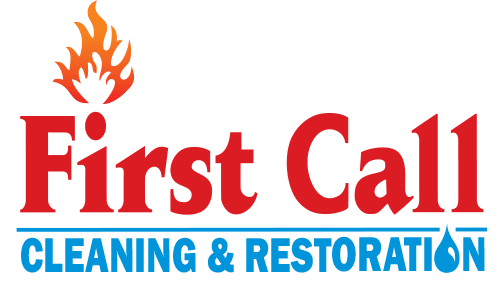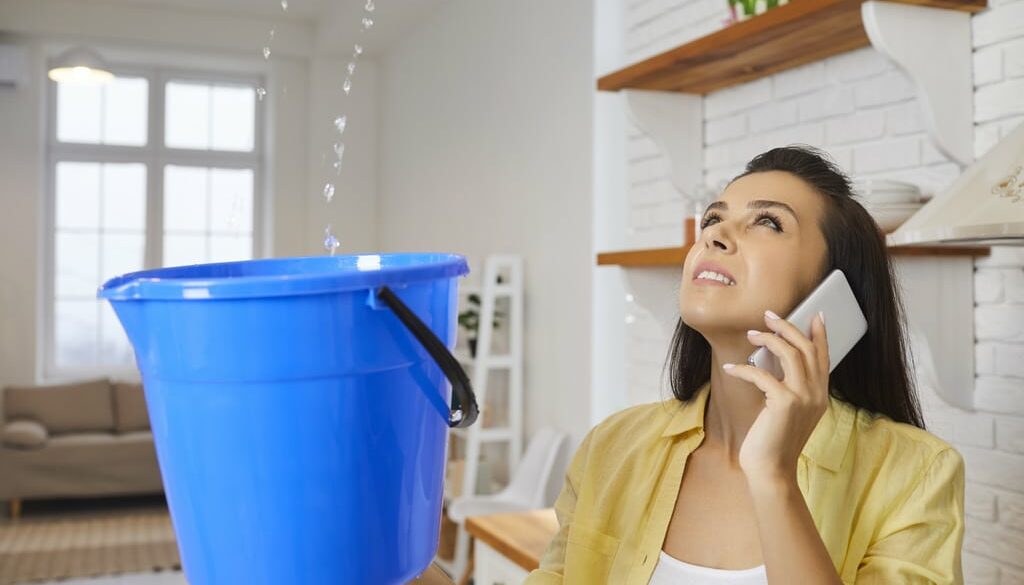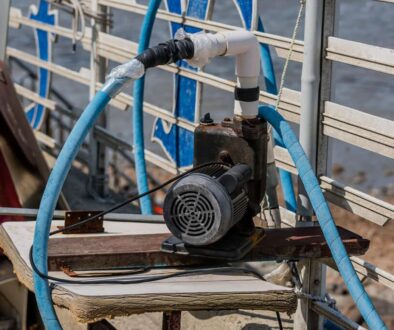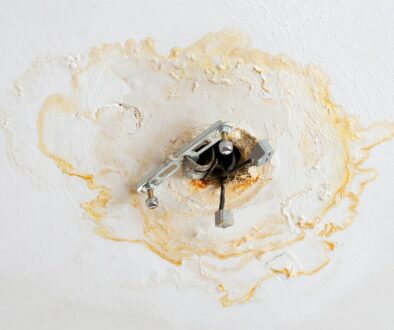No matter when it happens, burst pipe water damage is a stressful problem for any homeowner. Water spilling into your home where it doesn’t belong can lead to many problems.
In many cases, freezing temperatures are the cause of damage to your pipes. The water within them expands as it freezes, building up pressure and cracking or bursting the pipes. In climates like ours in central North Carolina, this cracking may happen overnight but not be obvious until the following day when the warming weather unfreezes the water. Then, you can find yourself walking right into a growing puddle in the middle of your home!
Avoiding burst pipe water damage comes down to handling the leak correctly once you find it. Here’s seven vital steps that can help minimize the damage and solve the problem faster:
7 Steps to Follow After a Burst Pipe
1. Stop the Flow of Water By Shutting Off the Water Supply
If you encounter burst pipe water damage in your home, the first thing you should do is shut off the water supply. This stops water from gushing into your house. There are a few different places the main water line could be in your home. According to home improvement site The Spruce , the shut off valve for a house on municipal water is often at the front. The water shut off valve for a house on well water may be more likely to be on the side or back.
The site explains that, as finding and using the shut off valve can be complicated, it may be easier to shut off the water closer to the suspected source of the issue. For example, if you have a leak under your sink or near an appliance, the attached plumbing and valves are exposed and easier to turn off while you wait for help.
2. Reduce Pressure on the Pipes (And Prevent Further Damage)
After shutting off the water supply, open all of the faucets in your home to help drain the water out of your pipes. This can reduce the burst pipe water damage by limiting how much water is continuing to leak where it shouldn’t. You can also control the extent of the damage throughout the house by reducing the potential built-up pressure in the pipes. Running faucets and flushing the toilet are easy ways to help with this.
3. Try to Find the Leak or Source of Damage
Pinpointing the location of the burst and leaking pipe can help you take more action to respond to the damage. It can also help a professional act faster once he arrives to help stop the leak. When water is flowing into your home, it can be easier to spot the source. If the original location of the leak has been submerged under the water, watch the water itself. Bubbles in the floor or walls can be a good clue to the source of the leak.
When there isn’t an active flood, but rather a slow leak, the clues can be harder to spot. Rings, staining, or new ripples or cracks in your ceiling or walls can be the most tell-tale signs of an actual burst pipe. If you notice other things like a musty smell in one area of the house or condensation inside your windows, you could be dealing with a leak that has existed for a long time. In this post, we reviewed what these signs mean and what you should do about them.
4. Call a Plumber for Immediate Assistance
After you have done what you can to slow the damage from the burst pipe, it’s time to call in a plumber and start recording the burst pipe water damage. Calling a plumber is the only way to guarantee the break has been fixed. Burst pipes can be serious and costly issues. A professional plumber will have the tools, knowledge, and training to find the source of a burst pipe quickly. They can also fix the broken pipe and help you locate any underlying issues that caused the original problem.
After the pipe is fixed, you still have to handle the damage it caused. A professional water restoration company can help with that, which we’ll explain in greater depth later. While you’re waiting for them to arrive, there are a couple more things you need to do to save yourself money and stress.
5. Record the Burst Pipe Water Damage for Your Insurance Company
You’ve done what you can to control the initial leak and the plumber is on the way to help. Now, you need to assess the damage and start documenting it. Your home insurance policy may include water damage coverage. If it does, you will need proof of the damage, receipts of the repairs, and evidence of the steps taken to fix it.
Take photographs or a video of the area where the leak occurred and write down what you see. Overwhelmed by the amount of documentation required for your insurance company? Don’t be. First Call will handle documentation for you and keep a complete record of all your repairs. We work closely with your insurance company to save you the headache.
6. Clean Up the Water As Much As You Can
Now it’s time to clean up the mess. The first step is to remove excess moisture as quickly as possible. This will help prevent further damage in the affected areas. Use towels, sponges, and mops to clean up standing water. Run fans and dehumidifiers in the space to dry up moisture. If weather allows, you can also open windows or doors to keep fresh air flowing through the area.
If any furniture or other objects were in the space, remove them as well. This will help the floors, walls, and carpets dry faster. It is especially important to unplug, turn off, and remove any electronics in the space – other than your dehumidifier of course!
7. Call a Water Restoration Company to Prevent or Fix Serious Damage
Once you have taken these initial steps, your next priority should be to contact a water damage restoration company. They will help address any immediate structural issues and begin the process of cleaning up and restoring your property. Depending on the extent of the damage, this may involve drying out any wet materials such as drywall and carpeting. It may also include additional steps to minimize the risk of mold growth within your home’s walls or flooring.
Even if the leak seemed small and you were able to dry up all the visible water, notifying a water damage restoration company is a step you do not want to skip. All it takes is a few drops of water within the walls of your home to create a breeding ground for mold. A water restoration company will know how to look for the things it is easy to miss and prevent future damage. They can also work directly with your insurance company, reducing some of the hassle for you in dealing with this stressful situation!
First Call Can Minimize Your Burst Pipe Water Damage
If you are dealing with a burst pipe in your home, the most important thing to remember is to take action as quickly as possible. With the right steps and professional help, you can minimize damage and restore your property safely.
For over thirty years, First Call has provided trustworthy water clean up and restoration services to locals in the Alamance and Guilford county regions. In addition to serving Burlington and Greensboro, our reach extends to Raleigh and the Triangle. We have the equipment and resources necessary to do the job well, without the extra fees a national company might charge.
Request a free consultation today for burst pipe water damage through this website here: https://firstcallnc.com/contact-us/. We look forward to serving you!




